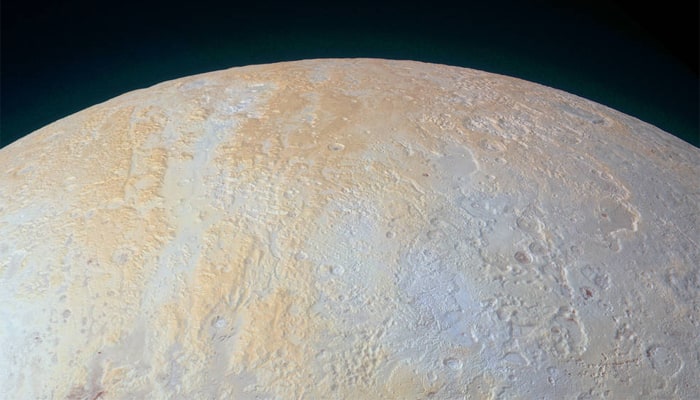New Delhi: NASA's New Horizons spacecraft is forever at work, covering the icy cold parameters of the dwarf planet, Pluto.
It is all courtesy New Horizons, that NASA is able to give us all the latest updates on Pluto and its steady evolution. Be it icy volcanoes that adorn the planet or the activity of its five moons, New Horizons bears testimony to the fact that the dwarf planet is loaded with surprises.
In another image beamed back to NASA, New Horizons gives us another proof of Pluto's diversity in terms of its geological and compositional features, this time in an enhanced color image of the north polar area.
As per NASA reports, Long canyons run vertically across the polar area—part of the informally named Lowell Regio, named for Percival Lowell, who founded Lowell Observatory and initiated the search that led to Pluto’s discovery. The widest of the canyons (yellow in the image below) – is about 45 miles (75 kilometers) wide and runs close to the north pole. Roughly parallel subsidiary canyons to the east and west (in green) are approximately 6 miles (10 kilometers) wide. The degraded walls of these canyons appear to be much older than the more sharply defined canyon systems elsewhere on Pluto, perhaps because the polar canyons are older and made of weaker material. These canyons also appear to represent evidence for an ancient period of tectonics.
A shallow, winding valley (in blue) runs the entire length of the canyon floor. To the east of these canyons, another valley (pink) winds toward the bottom-right corner of the image. The nearby terrain, at bottom right, appears to have been blanketed by material that obscures small-scale topographic features, creating a ‘softened’ appearance for the landscape.
Large, irregularly-shaped pits (in red), reach 45 miles (70 kilometers) across and 2.5 miles (4 kilometers) deep, scarring the region. These pits may indicate locations where subsurface ice has melted or sublimated from below, causing the ground to collapse.

















